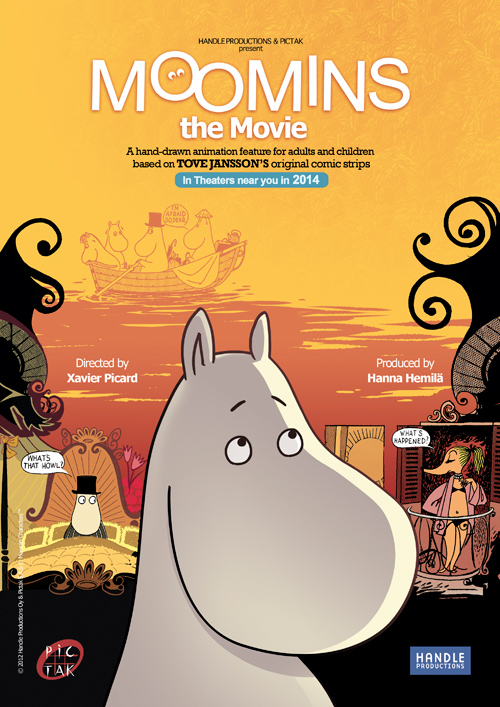


Watercolour with Black Moomintroll, 1934.


What is interesting is that instead of hating the Moomins for the colossal distraction they became (at one point she was receiving hundreds of fan letters a day, and replying to most if not all), she used them to work through her own psychological responses to the world around her, which is why the series of books (and comic strips) grow so decidedly odd as the saga progresses. For most of her career in her own mind she was always, first and foremost, a painter, not a writer of children’s fairy stories. By her own admission her studies followed the all-too familiar pattern of Dull Classes – Rebellion against Traditional Teachers – Creating a Bohemian Colony of Free Art with Fellow Students – Rinse and Repeat. Tellingly holidays often consisted of sitting in tents on islands in the middle of thunderstorms, an image of the eccentric family simultaneously defying and flourishing from disasters and tempests which she would return to time and again in her books. Her father was a sculptor, her mother a graphic designer, and they come across as wackily creative and avant-garde as you would expect, along with their immediate circle of relatives and friends. In many ways Tove Jansson’s life is a text-book essay in How to Be a Bohemian Artist. If Westin’s book is anything to go by (and it’s hard to fault any of her meticulously researched arguments) the entire chronicle of those fluffy-tailed, big-nosed cuddly toys is a masterpiece study of the relationship between the artist, family, existence, the universe and consciousness to rival anything by Sartre, Kafka or Camus. I’ve just finished Boel Westin’s biography of the author Tove Jansson: Life, Art and Words, translated into English for the first time this year, and now all my Moomin books are under a bucket at the bottom of the garden with several large bricks on top. A while back I wrote a post about Tove Jansson’s last Moomin book, Moominvalley in November (1971), pointing out that behind the innocent guise of a charming children’s tale lurked a masterpiece of Nordic existentialism.


 0 kommentar(er)
0 kommentar(er)
